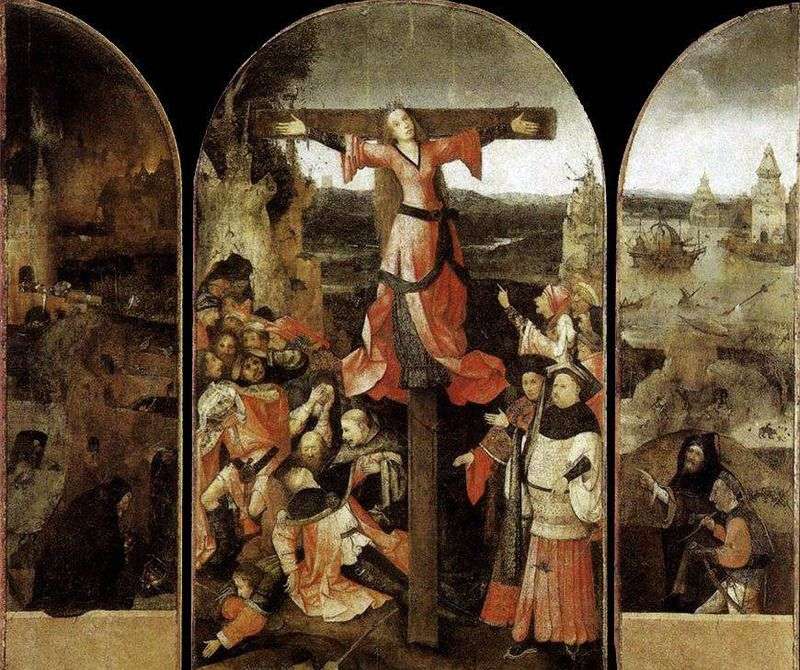
The Holy Liberate or Vilgefortis is a Catholic saint, the patroness of girls seeking to get rid of importunate admirers. According to legend, she was the daughter of the Portuguese king – a hardened pagan, who wanted to extradite her for the King of Sicily.
However, she did not want to marry any kings, because she was a Christian and gave a vow of celibacy. In an effort to keep her vow, the princess prayed to heaven and found a wonderful deliverance – she grew a thick long beard; The Sicilian king did not want to marry such a blackguard, after which an angry father ordered her to be crucified. It is also known as Kummernis, Ontokommena, Livrade, and in England as Ankamber. Until recently, the martyr depicted on the altar fragment was identified with St. Juliana. It is now recognized that this is the holy Liberate punished by its pagan father for praying to the Lord for the appearance of a beard in her, wanting to remain a virgin.
The cult of this saint originated in the south of the Netherlands. In the cathedral of Hertogenbosch there is an altar dedicated to the martyr, where she is, as here, depicted beardless. Created shortly after 1500, this Bosch altar suffered greatly from the time, especially its side doors, which originally depicted two donators. The earliest mention of this triptych is contained in Antonio Maria Zanetti’s book On Venetian Painting, which described the paintings in the Doge’s collection.
In the XIX century, the triptych was transported to Vienna, and only in 1919. After the First World War, he returned in a heavily damaged form to his former place. The presence of a fainting character does not clarify the contradictions of the complex iconography of the picture. Previously it was considered that the triptych was dedicated to St. Juliana, whose cult is very common in Northern Italy. It was sold by slave traders Eusebius, who, perhaps, is represented as a character who has lost his senses. Some researchers suggest that another revered saint is depicted here – the daughter of the King of Portugal, Liberat, who was crucified at the behest of her pagan father for becoming the bride of Christ. In this case, in a young man, one can see one of the five thousand converted to the true faith by the efforts of a saint.
For the first and last time, Bosch depicts a scene of martyrdom with a crowd of spectators represented in extremely diverse clothing. The distribution of figures along the whole plane of the picture, from the bottom up, without a perspective alternation of plans in depth, is a tribute to the medieval tradition. Initially, on the doors of the triptych, his donators were depicted. The Saint Anthony, revered by Bosch, in no way connected with the central part of the triptych, on the left leaf and presumably two slavers on the right, are written over the image of the donators. On this triptych there is a signature of Bosch. It is made in Gothic letters and is traditionally placed at the bottom of the picture, as in the works in the Prado collection in Madrid: “The Seven Deadly Sins” and the triptych “Voz sena”.
 The holy hermits. Triptych by Hieronymus Bosch
The holy hermits. Triptych by Hieronymus Bosch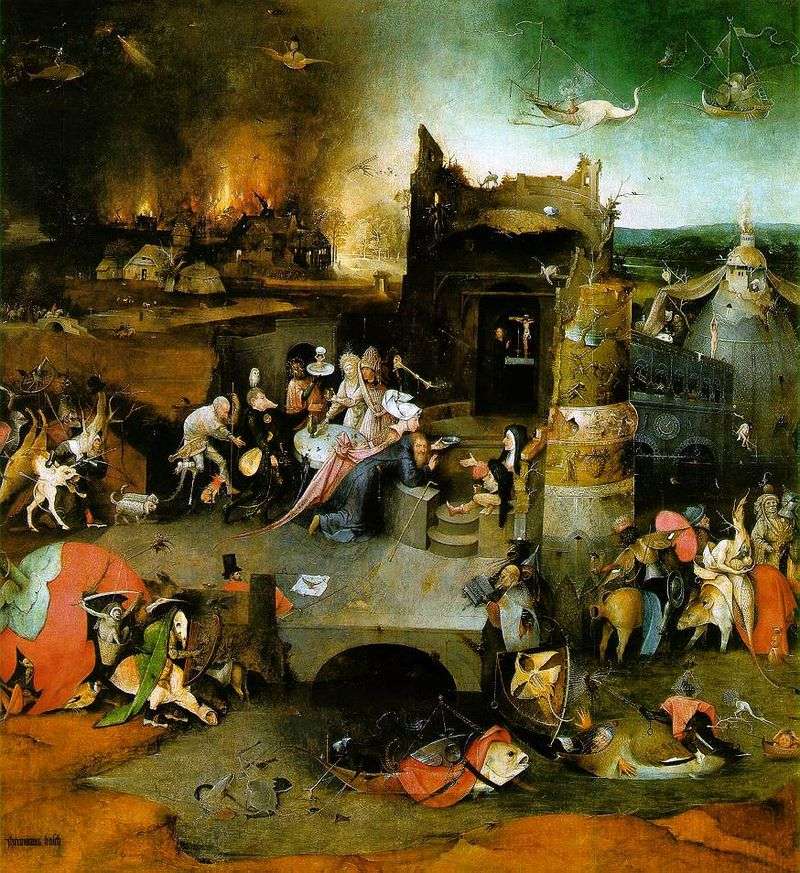 The altar of St. Anthony. The central part of the triptych is Hieronymus Bosch
The altar of St. Anthony. The central part of the triptych is Hieronymus Bosch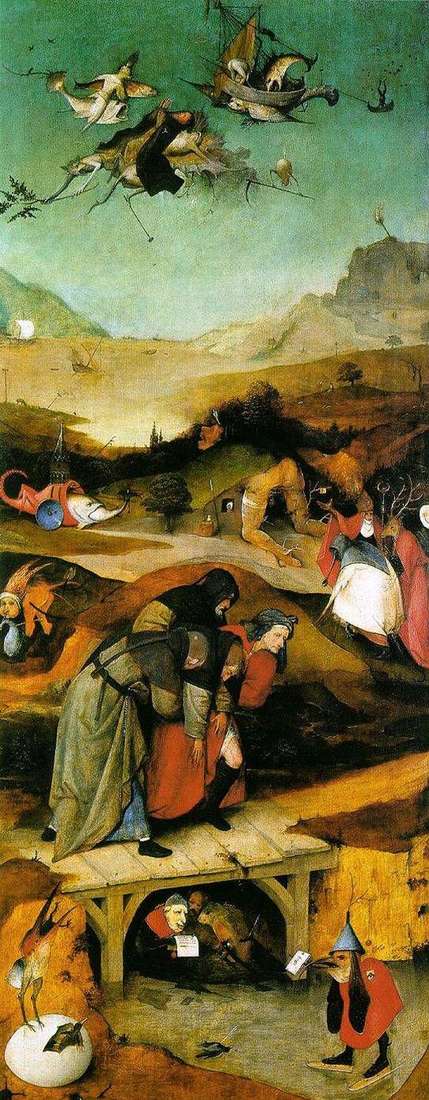 The flight and fall of Saint Anthony. The left wing of the triptych by Hieronymus Bosch
The flight and fall of Saint Anthony. The left wing of the triptych by Hieronymus Bosch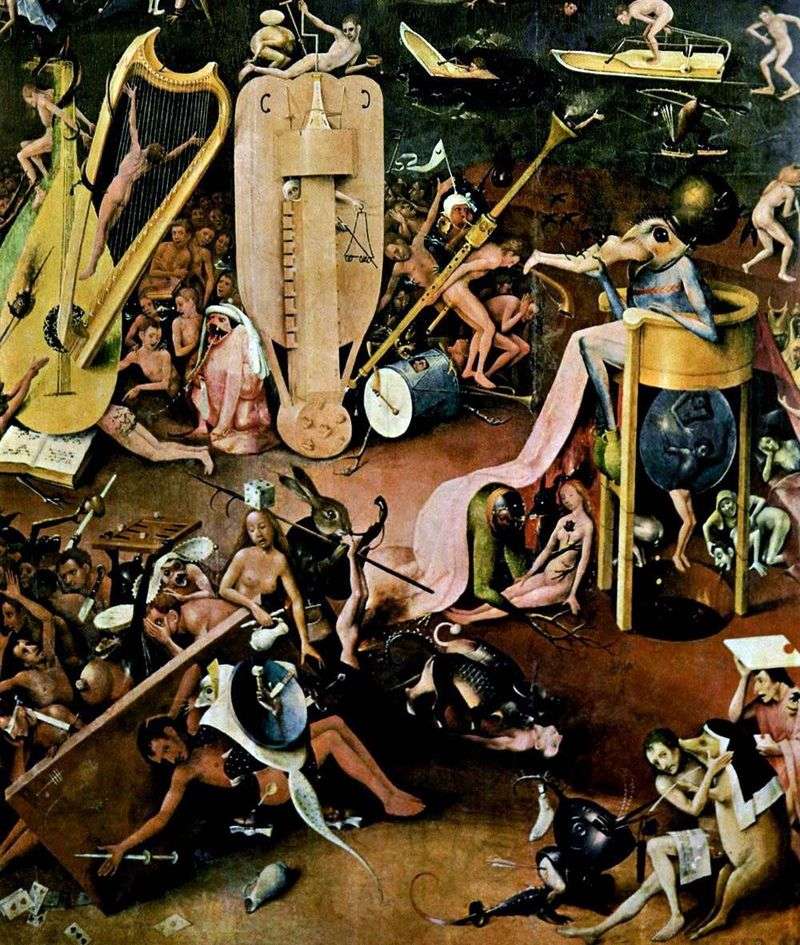 Hell. Detail of the triptych Garden of earthly pleasures by Hieronymus Bosch
Hell. Detail of the triptych Garden of earthly pleasures by Hieronymus Bosch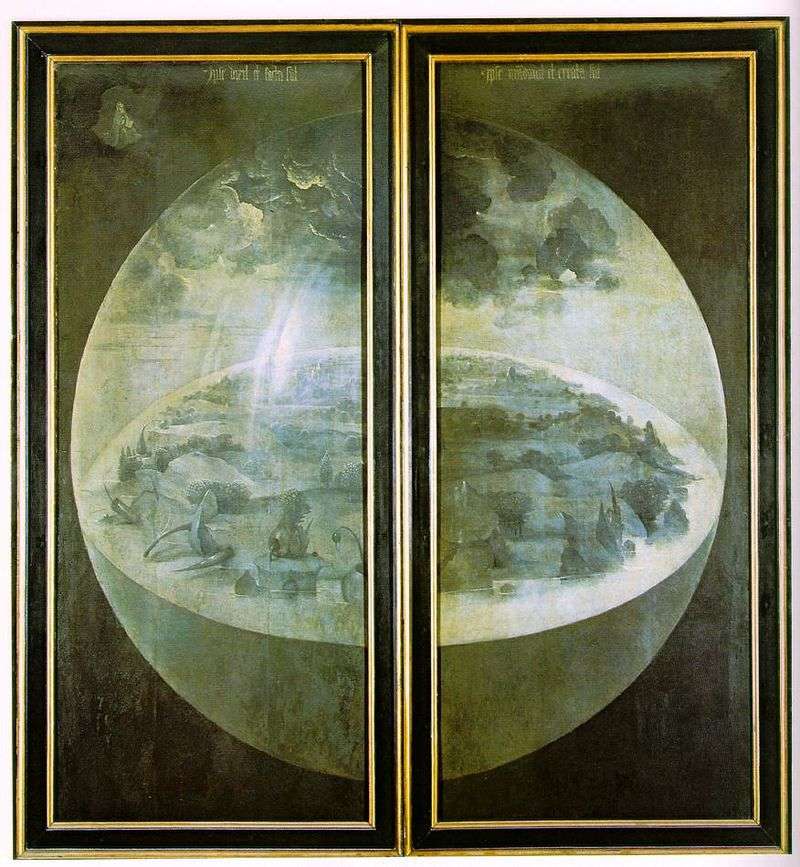 World creation. The outer leaves of the triptych Garden of earthly pleasures by Hieronymus Bosch
World creation. The outer leaves of the triptych Garden of earthly pleasures by Hieronymus Bosch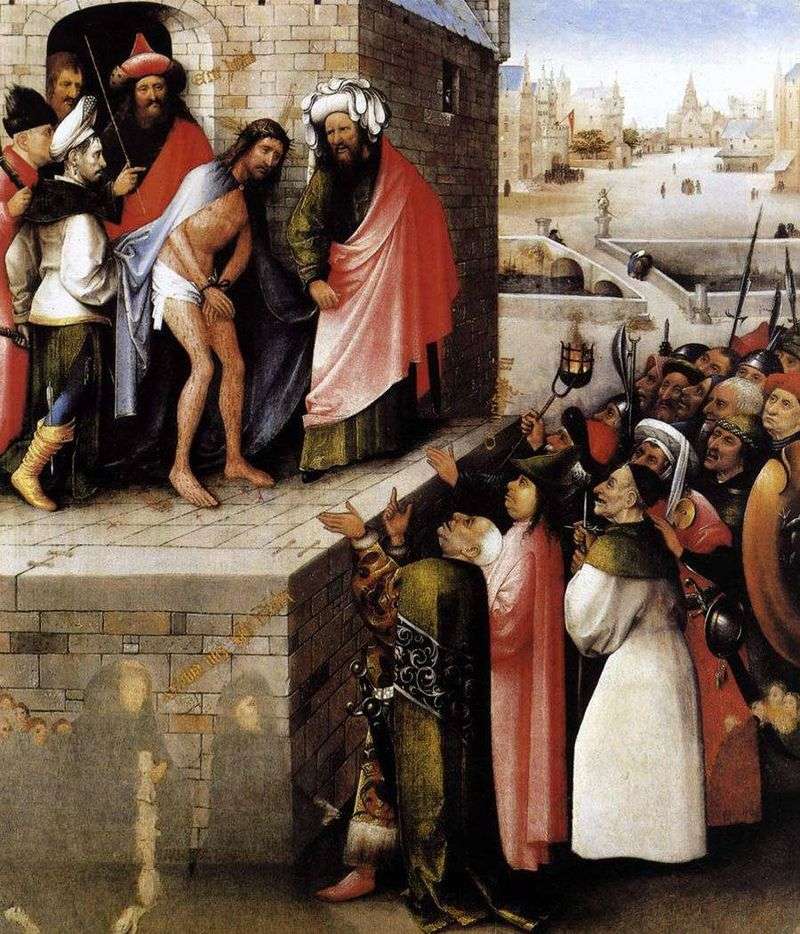 Ecce Homo by Hieronymus Bosch
Ecce Homo by Hieronymus Bosch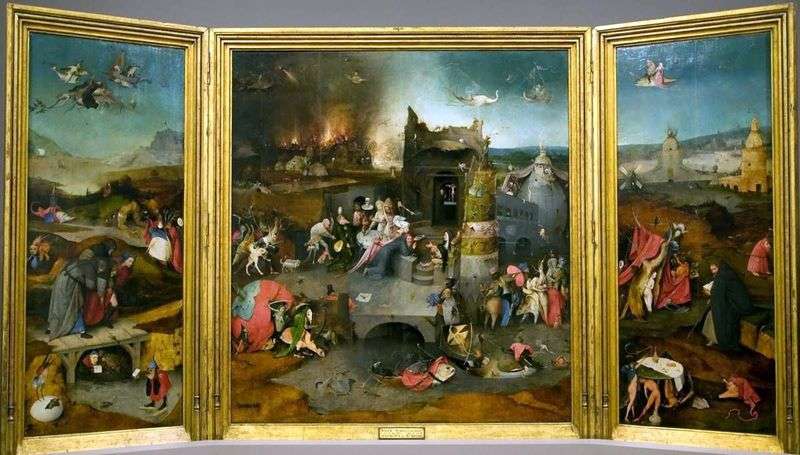 The Temptation of St. Anthony by Hieronymus Bosch
The Temptation of St. Anthony by Hieronymus Bosch St. Bavon by Hieronymus Bosch
St. Bavon by Hieronymus Bosch